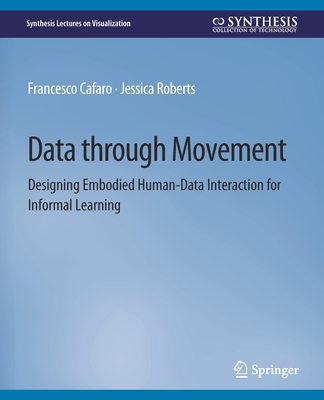You are here
Back to topData Through Movement: Designing Embodied Human-Data Interaction for Informal Learning (Synthesis Lectures on Visualization) (Paperback)
$59.99
Usually Ships in 1-5 Days
Description
When you picture human-data interactions (HDI), what comes to mind? The datafication of modern life, along with open data initiatives advocating for transparency and access to current and historical datasets, has fundamentally transformed when, where, and how people encounter data. People now rely on data to make decisions, understand current events, and interpret the world. We frequently employ graphs, maps, and other spatialized forms to aid data interpretation, yet the familiarity of these displays causes us to forget that even basic representations are complex, challenging inscriptions and are not neutral; they are based on representational choices that impact how and what they communicate. This book draws on frameworks from the learning sciences, visualization, and human-computer interaction to explore embodied HDI. This exciting sub-field of interaction design is based on the premise that every day we produce and have access to quintillions of bytes of data, the exploration and analysis of which are no longer confined within the walls of research laboratories. This volume examines how humans interact with these data in informal (not work or school) environments, paritcularly in museums. The first half of the book provides an overview of the multi-disciplinary, theoretical foundations of HDI (in particular, embodied cognition, conceptual metaphor theory, embodied interaction, and embodied learning) and reviews socio-technical theories relevant for designing HDI installations to support informal learning. The second half of the book describes strategies for engaging museum visitors with interactive data visualizations, presents methodologies that can inform the design of hand gestures and body movements for embodied installations, and discusses how HDI can facilitate people's sensemaking about data. This cross-disciplinary book is intended as a resource for students and early-career researchers in human-computer interaction and the learning sciences, as well asfor more senior researchers and museum practitioners who want to quickly familiarize themselves with HDI.
About the Author
Francesco Cafaro is an Assistant Professor in the School of Informatics and Computing (SOIC) at Indiana University-Purdue University Indianapolis. Before joining SOIC as an assistant professor of human-computer interaction, Cafaro was a research assistant at the Learning Technology Group (Electronic Visualization Laboratory) of the University of Illinois at Chicago, where he served as a key collaborator on multi-disciplinary, federally-funded research projects. These efforts have produced prototype interactive exhibits for collaborative data exploration, first at the Jane Addams Hull House Museum in Chicago, and then at the New York Hall of Science in Queens. His research interests include embodied interaction, interaction design, and informal learning. His work is centered on the use of novel interaction techniques in support of STEM informal learning and cultural heritage. Specifically, he investigates how theories from learning, cognitive, and computer sciences can provide the scaffolding for the design of intuitive, embodied interactions. Dr. Cafaro's multi-disciplinary research has involved the design and evaluation of prototype exhibits at Discovery Place in Charlotte, North Carolina, and for the Historic New Harmony program in southern Indiana.Jessica Roberts is an assistant professor in the School of Interactive Computing at Georgia Institute of Technology (Georgia Tech). Prior to joining Georgia Tech, Dr. Roberts conducted postdoctoral research at the Human-Computer Interaction Institute at Carnegie Mellon University and the Tidal Lab at Northwestern University. She holds a Ph.D. in Learning Sciences with a concentration in geospatial analysis and visualization from the University of Illinois-Chicago and a B.S. with a concentration in theatre design from Northwestern University. Her research examines how people learn through, with, and about data in out-of-school environments such as museums and citizen science activities and how interactive technologies mediate social, informal learning experiences. Her work on the design of interactive learning technologies has been exhibited at venues including the Field Museum of Natural History in Chicago and the New York Hall of Science.
